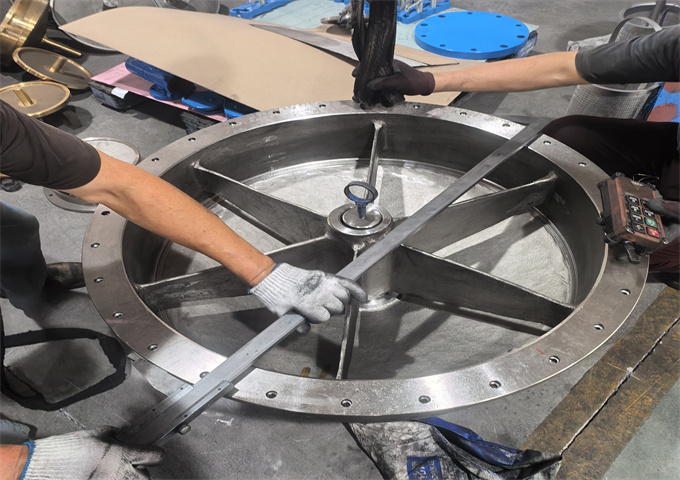Valve Testing | Ensuring Reliability and Safety in High-End Industrial Products

How confident are you that every valve in your production line will perform flawlessly under operational stress? Even minor valve failures can trigger costly downtime, safety hazards, or regulatory violations.For importers, valve testing is more than a checklist item; it’s a critical step to safeguard product quality and operational efficiency. From control valves in automated processes to safety valves in high-pressure systems, rigorous testing ensures every component meets its intended operating conditions.
Why Valve Testing Matters in Manufacturing
Valves are critical in regulating flow, pressure, and safety in industrial processes. Whether handling ball valves, gate valves, globe valves, or check valves, a single failure can cascade into operational disruptions, recalls, or fugitive emissions.
Key benefits of valve testing during manufacturing:
- Detects valve failure before it impacts production.
- Identifies corrosion, material fatigue, or leakage under high-pressure and high-temperature conditions.
- Ensures compliance with ISO 5208, API 598, ASME B16, API 6D, and ANSI standards.
- Supports supply chain resiliency and protects brand reputation.
For sourcing managers and logistics professionals, integrating valve inspection into quality control reduces operational risk and improves valve performance across the supply chain.
Types of Valves and Their Testing Needs
Valves come in a variety of designs depending on their function, valve type, and industrial application. Understanding the differences helps sourcing managers, product developers, and logistics professionals select the correct valve and testing approach.
Key Valve Types
- Ball Valves – Provide quick shut-off; tested for seat leakage, hydrostatic integrity, and functionality under working pressure.
- Gate Valves – Ideal for flow isolation; evaluated for full open/close performance and leakage rates.
- Globe Valves – Used for precise flow control; tested for throttling performance and seat leakage.
- Butterfly Valves – Common in large pipelines; testing focuses on valve performance, actuator functionality, and leakage.
- Plug Valves – Rotating plug design; verified for pressure testing, valve seat sealing, and high-pressure operation.
- Swing Check Valves – Allow flow in one direction only; undergo functional testing, pneumatic leak tests, and visual inspection.
- Pressure Relief Valves / Safety Valves – Protect systems from overpressure; tested for calibration, test pressure, and hydrostatic testing.
- Gray Iron Valve Body / Gray Iron Valve Cover – Common materials for durable valve components; visual inspection and hydrostatic tests ensure resistance to corrosion and high temperature conditions.
Each valve type requires tailored valve testing procedures, including hydrostatic testing, pneumatic testing, ultrasonic inspections, and functional checks to ensure compliance.
Partners like Silq can help you integrate this into your supply chain and product development, ensuring valves perform reliably under specified operating conditions, preventing valve failure and fugitive emissions.
Valve Testing Procedures
1. Hydrostatic Testing
Hydrostatic testing pressurizes the valve with water or fluid above its working pressure to verify structural integrity and leakage rates. This confirms that the valve’s design can handle overpressure without failure.
2. Pneumatic Testing
Using air or gas, this method evaluates control valves and actuators for leaks under operational pressures. It’s particularly useful for pneumatic systems where fluid cannot be used.
3. Seat Leakage Testing
Seat leakage tests assess the valve seat and valve stem sealing capabilities. Compliance with API 598 or ISO 5208 ensures acceptable fugitive emissions and safety under high-pressure conditions.
4. Functional Testing
Valves are cycled through their full range to confirm proper operation. This includes actuator response, globe valve throttling, and ball valve shut-off performance, simulating operating conditions.
5. Calibration
Accurate pressure gauges, actuators, and test equipment are calibrated to ensure reliable readings during pressure testing. Calibration is critical to maintain consistent valve performance.
6. Advanced Testing Techniques
- Ultrasonic inspection detects internal corrosion, cracks, or material fatigue.
- High-temperature testing ensures valves maintain integrity across the specified temperature range.
- Shell testing evaluates the valve body under extreme working pressure scenarios.
Standards and Compliance
Adhering to recognized test standards ensures safety and reliability:
- API 598 – Valve inspection, seat leakage, and hydrostatic testing.
- ISO 5208 – Pressure testing for industrial valves.
- API 6D – Pipeline and control valve standards.
- ASME B16 – Valve materials, design, and temperature range compliance.
- ANSI / MSS – Mechanical specifications, including leak test and pressure gauge protocols.
Following these standards helps companies prevent valve failure, maintain valve performance, and comply with global regulatory requirements.
Integrating Valve Testing into Supply Chains
For sourcing managers, product development, and logistics professionals, valve inspection is a strategic process:
- Supplier Qualification – Verify years of experience, compliance with standards, and testing capabilities.
- Pre-Shipment Inspection – Conduct hydrostatic, pneumatic, and leakage tests before shipping.
- Operational Simulation – Test valves under actual working pressure and high-temperature conditions.
- Documentation – Maintain detailed records of valve testing procedures, leakage rates, and functionality outcomes for audits.
Read More: Pre-Shipment Inspection Guide [Free Checklist Inside]
Preventing Valve Failures
Common causes of valve failure include:
- Incorrect valve type selection.
- Exposure to overpressure or excessive working pressure.
- Corrosion and material degradation.
- Actuator or control valve malfunction.
Rigorous valve testing, visual inspection, and calibration prevent failures and ensure long-term operational reliability.
Ensure Reliable Valve Performance with Silq
For high-end manufacturing supply chains, Silq’s on-the-ground valve testing solutions safeguard quality, safety, and operational efficiency. From ball valves and gate valves to pressure relief valves, our experts combine hydrostatic testing, leak testing, functional testing, and calibration to ensure every valve meets its operating conditions. By integrating standardized testing procedures into your supply chain with Silq, you can reduce valve failure, prevent costly downtime, and maintain your company’s reputation for excellence.
Partner with Silq today to streamline your valve inspections and secure consistent, reliable performance across all industrial processes.
Ready for Supply Chain Predictability?
Importers using Silq ship smarter, safer, and with total control.








